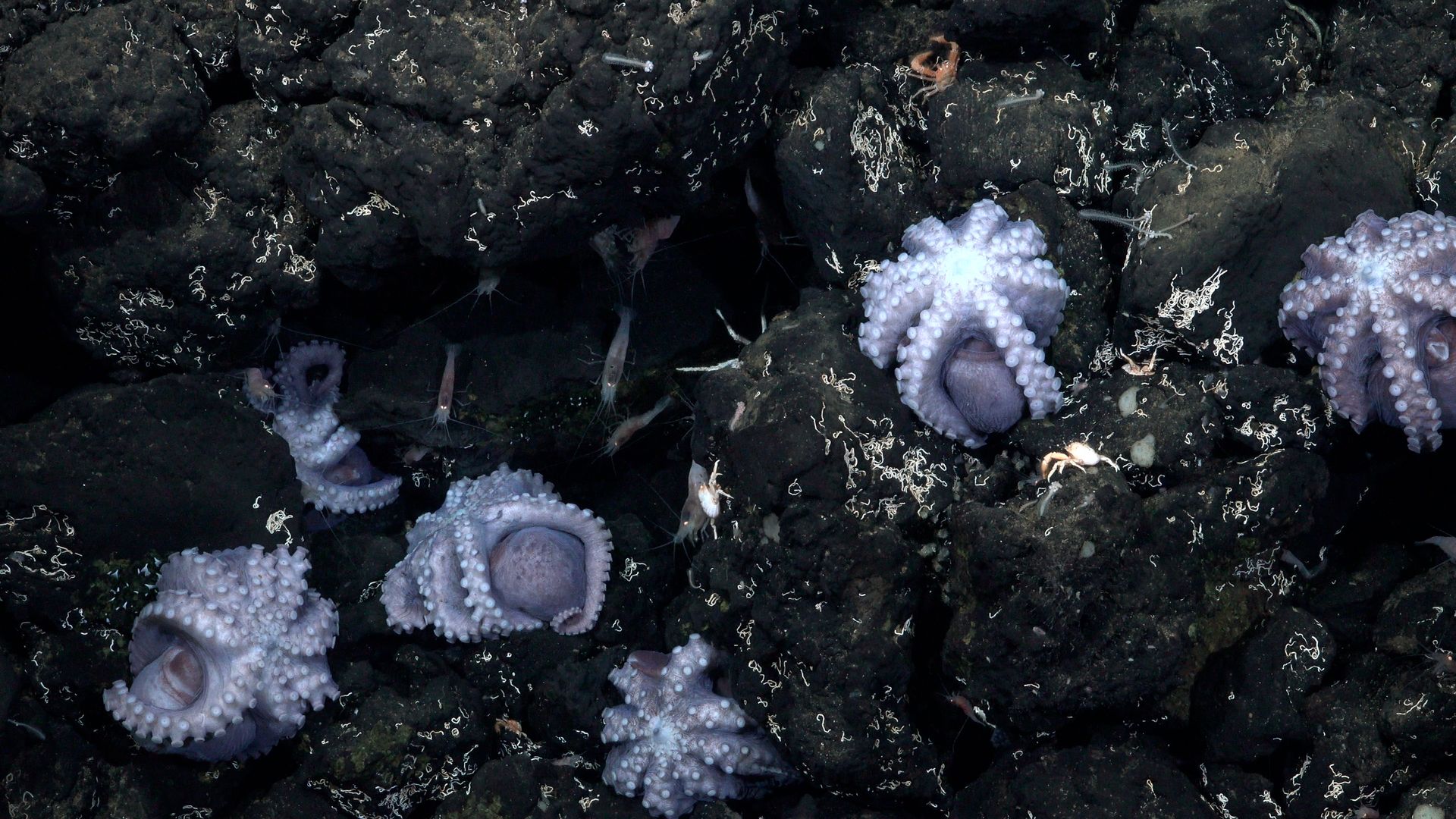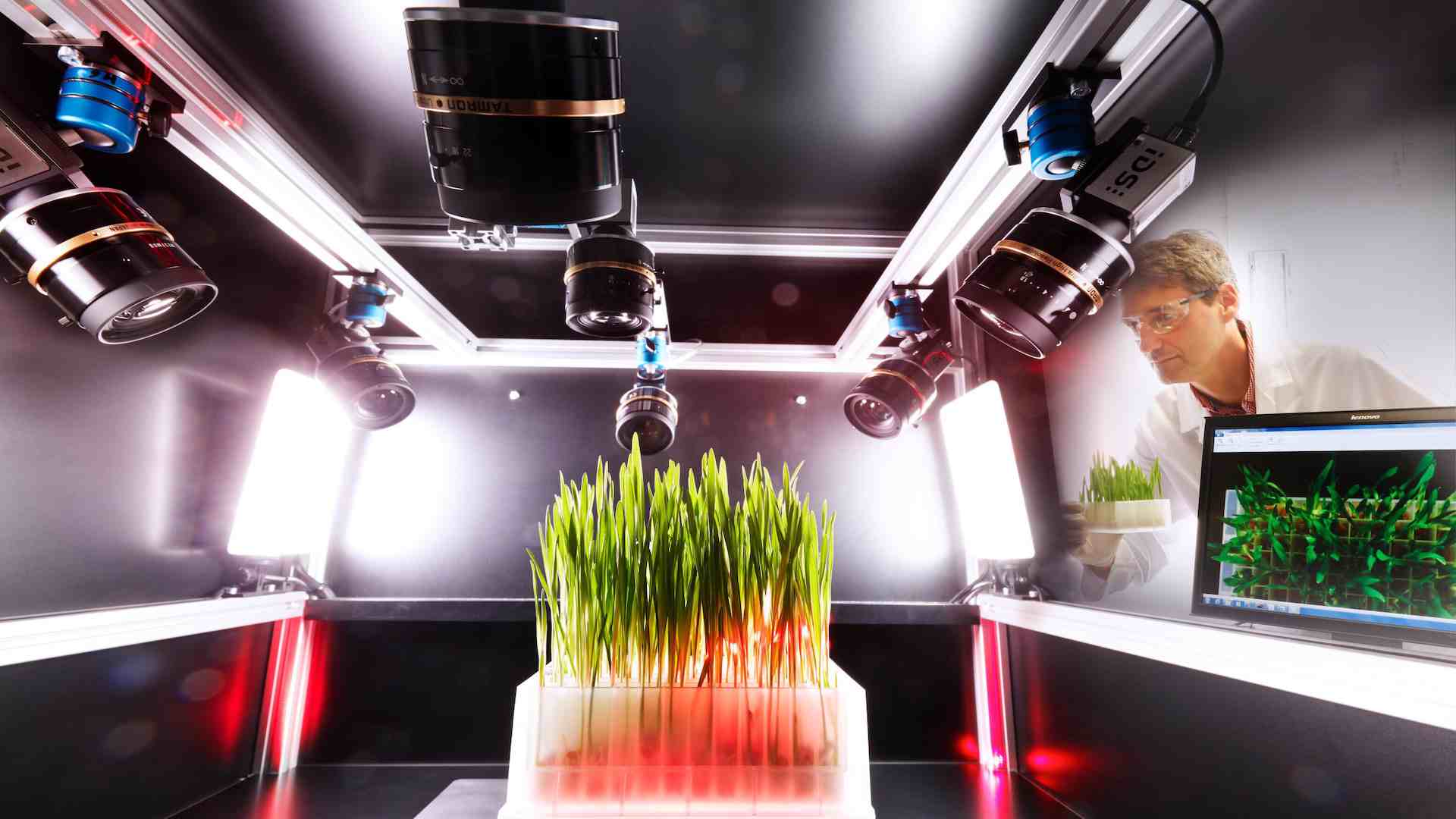| | | | | | | Presented By Bayer | | | | Axios Science | | By Alison Snyder · Jun 29, 2023 | | Thanks for reading Axios Science. This edition is 1,821 words, about a 7-minute read. | | | | | | 1 big thing: The search for dark matter and dark energy widens |  | | | Photo illustration: Aïda Amer/Axios. Photo: NASA, ESA, CSA, and STScI | | | | The hunt for dark matter and dark energy in the universe is expanding, my Axios colleague Miriam Kramer and I write. The big picture: Gravity from dark matter holds gas and dust together in stars and galaxies while dark energy pushes galaxies away from one another. Together, scientists think they make up 95 percent of our universe but what exactly they are remains elusive. - Over decades, a few dark matter candidates have been crossed off the list (it's not any of the known elementary particles) and scientists have discovered new galaxies and places to search for clues about both dark energy and dark matter.
- Now, the next generation of tools to spot evidence of dark matter and dark energy is coming online, adding more precise space-based telescopes and new ground observatories to the hunt.
Driving the news: The European Space Agency's Euclid space telescope is slated to launch from Cape Canaveral on July 1 aboard a SpaceX Falcon 9 rocket. - It will survey more than one-third of the sky — collecting data from 1 billion galaxies that existed as far back as when the universe was a mere 3.8 billion years old.
- Gravity from dark matter still dominated the universe then and slowed its expansion until about 7 billion years ago, when dark energy's influence became greater and the universe began to expand more rapidly. Its effects can be seen in the radiation left over from the Big Bang and how fast galaxies recede into space over time.
- Euclid will capture images of galaxies and other objects during that transition, which scientists hope will yield new clues.
How it works: The images gathered by Euclid will be used to determine the size of the universe at various points in time. - Light from galaxies can be distorted by clumps of dark matter as it travels across the universe. From that data, scientists can create a map of dark matter in the universe at different times. What that distortion looks like can also help scientists determine if dark matter is made of heavy or light particles — information that can help to hone the search for dark matter candidates in particle accelerators on Earth.
- Data from Euclid images will also be used to look at how the distances between clusters of galaxies changed over the history of the universe as they were influenced by dark energy.
Between the lines: Ultimately, answers about dark energy will determine whether the acceleration of the universe can be explained by a mathematical fix to Einstein's theory of gravity known as the cosmological constant, an entirely new force or a modification of theories of gravity. What to watch: NASA is planning to launch its Nancy Grace Roman space telescope in 2027, which will also study cosmic acceleration using some of the same methods as Euclid. - The ground-based Vera Rubin Observatory, which is expected to begin operations in the next year, will also probe the nature of dark matter.
The very big picture: "We're very lucky that we live in this cosmic epoch," says Timothy Tait, a particle physicist at the University of California, Irvine. - Any earlier in the universe, dark energy would have such a small effect that its effects wouldn't be measurable, he says. And, if we lived far in the future, dark energy would dominate everything.
- We're in the midst of a relatively balanced cosmic push and pull between dark energy and dark matter.
- That gives scientists the opportunity to measure both but also to explore whether they might interact and whether one is determining the properties of the other, Tait says.
- "If that's true, then it's only in a time like now where you can see kind of similar amounts of both of them, that you would be able to see those dynamics and actually understand that important piece of the puzzle."
Go deeper. |     | | | | | | 2. Canada's wildfire smoke emissions break records |  | | | The Chicago skyline Tuesday through smoke from Canadian wildfires. Photo: Jamie Keleter Davis/Bloomberg via Getty Images | | | | First, the record Canadian wildfire season exposed residents of the biggest cities in the Northeast and mid-Atlantic to hazardous air quality. Why it matters: Wildfire smoke is a public health hazard that can aggravate chronic conditions and pose risks for even healthy populations. Between the lines: At the same time that Canada's fires were obscuring the Chicago skyline, people in Spain and Portugal (about 4,000 miles away) saw milky sunshine through a thick veil of smoke that made the trans-Atlantic crossing from Quebec's wildfires. - Canada's wildfire season is the worst on record since at least 1983, having burned 7.8 million hectares (19.3 million acres) through Tuesday.
- The fires are not expected to be extinguished, either by firefighters or a major shift in weather conditions, until after summer ends.
The intrigue: The carbon dioxide emissions from Canada's wildfires through June 26 rank as the largest annual estimated emissions in the group's 21-year data set, according to the Copernicus Atmospheric Monitoring Service (CAMS) in Europe. - Copernicus' scientists estimate wildfire emissions by using satellites to track the heat output from a fire, which is tied to the fire's consumption of fuels.
Context: Climate change is worsening wildfires and combining with other factors, such as land management, to yield larger blazes that exhibit extreme behavior. - This is the case in the U.S. West and large parts of the affected areas in Canada, particularly given repeat heat waves in parts of Canada since May.
- Numerous instances of fire-generated thunderstorms have been observed in Canada this summer, a sign that the fires were burning at a high intensity.
Go deeper. |     | | | | | | 3. A new push to measure the impact of R&D |  Data: National Center for Science and Engineering Statistics; Chart: Thomas Oide/Axios The National Science Foundation is launching a $30 million program to assess what the U.S. gets out of investments in R&D — and predict how it could strategically fund key research for emerging technologies in the future. Why it matters: Economies and the quality of human health and life hinge on scientific advances, placing science and technology at the center of national security and geopolitical power. - The U.S. spent $730 billion funding R&D in 2020, according to the latest Organization for Economic Cooperation and Development data. And the CHIPS and Science Act passed last year authorized $200 billion in federal scientific research funding over the next ten years.
- "It's really important for us to be sure that we are investing those resources effectively in order to be able to advance U.S. competitiveness [and] to foster innovation to benefit all Americans all across this country," says Erwin Gianchandani, assistant director for Technology, Innovation and Partnerships at the NSF.
Details: The Assessing and Predicting Technology Outcomes (APTO) program has a particular emphasis on assessing investments in 10 research areas, including AI, biotech and quantum sciences, identified in the CHIPS and Science Act as priorities for federal science funding. - APTO will try to measure the capabilities, use and production of those technologies.
- But those outcomes aren't necessarily captured in the traditional measures of research output — for example, patents and publications.
- The new NSF program is especially "interested in the collection and aggregation of data and the analytics associated with that, that allow us to be able to understand capabilities," Gianchandani says. The goal is to then be able to construct models that describe the impact of past investments and can be used to target future ones.
The big picture: The research is part of an emerging field of the "science of science" that aims to use scientific tools to study the scientific endeavor itself. - Researchers are trying to determine why there is less disruptive science happening, what is causing an apparent stagnation in scientific progress and other trends.
- They're interested in a range of factors, including whether the agency or foundation that funds research has an impact on its outcome.
|     | | | | | | A message from Bayer | | Explore regenerative agriculture | | |  | | | | Division harnesses the power of AI, Machine Learning and cutting-edge breeding to shave decades off developing tomorrow's crops and shape the future of agriculture. What's in it for you: Hear how Bayer is helping pioneer a new era of farming. Watch now. | | | | | | 4. Worthy of your time | | Newfound gravitational wave "hum" may be from the universe's biggest black holes (Emily Conover — Science News) The terror of threes in the heavens and on Earth (William Broad — NYT) Beyond Ozempic: Brand-new obesity drugs will be cheaper and more effective (Saima Sidik — Nature) |     | | | | | | 5. Something wondrous |  | | | A deep-sea octopus garden. Photo: Schmidt Ocean Institute | | | | Two octopus nurseries have been spotted deep below the ocean surface off the west coast of Costa Rica. The big picture: It's a rare sighting. Octopuses are typically solitary creatures and aren't known to brood their eggs near other octopuses. Before this expedition, there was only one other known deep-sea octopus nursery, which was discovered on an underwater mountain off the coast of central California. What they found: A team of international scientists aboard a Schmidt Ocean Institute research vessel discovered the octopus nurseries while sampling low-temperature hydrothermal vents on the ocean floor. - The larger nursery, or garden, was found more than 9,000 below the sea's surface in the Dorado Outcrop, where a decade ago researchers had previously spotted for the first time octopuses aggregating in the deep sea but they didn't see any developing embryos and weren't sure it was an active nursery.
- The Dorado Outcrop is also next to a low-temperature hydrothermal vent that releases fluids at about 12°C (about 54°F). The ocean at these depths is about 2°C, or about 36°F, and scientists thought the warmer waters wouldn't be hospitable for the octopuses.
- But on this month's expedition, researchers confirmed it was a nursery. They saw mothers protecting their eggs, hatchlings emerging and predators quickly moving in when eggs were exposed. (They found a second nursery near a similar vent on another unnamed outcrop where octopuses behaved in the same way.)
Details: The scientists think the octopuses might be a new species of Muusoctopus, a genus of deep-sea octopuses that lack an ink sac. Specimens from the expedition are now being analyzed by researchers at the Museum of Zoology at the University of Costa Rica. - "We think some species of octopus have developed an adaptation that they can tolerate being in warmer temperatures to brood their eggs," says Beth Orcutt, vice president of research at the Bigelow Laboratory for Ocean Sciences and co-leader of the expedition.
- It can take an octopus mother four years to successfully brood a baby.
- One possibility is this adaptation "might allow development to happen faster," Orcutt says.
The intrigue: "What we found is a very rare event world-wide, the nursing octopus, but we also encountered many organisms of which there are few records from any where in the planet," expedition co-leader Jorge Cortés-Núñez of the University of Costa Rica writes in an email. - The expedition also studied five seamounts that had never been explored, and discovered a deep-sea skate nursery.
In studying the deep sea, Cortés, who spent decades focusing on coastal marine ecosystems, says he encountered "creatures much larger than I have read about and many very strange and different from anything I have seen." - "It also made me aware of the connection of the deep with the surface and vice versa ... and how important it is to have a healthy ocean for a healthy planet."
|     | | | | | | A message from Bayer | | Hear from today's top leaders and scientists | | |  | | | | Watch Bayer's Crop Science Innovation Summit to learn about: - Bayer's coordinated and cutting-edge approach to agriculture-industry value creation.
- How its systems- and outcome-based approaches create long-term value for farmers and investors.
- And more.
Get started. | | | | Thanks to Miriam Kramer for writing with me this week, to Aïda Amer and Thomas Oide on the Axios Visuals team and to copy editor Carolyn DiPaolo. |  | | Are you a fan of this email format? Your essential communications — to staff, clients and other stakeholders — can have the same style. Axios HQ, a powerful platform, will help you do it. | | | | | | Axios thanks our partners for supporting our newsletters.
Sponsorship has no influence on editorial content. Axios, 3100 Clarendon Blvd, Arlington VA 22201 | | | You received this email because you signed up for newsletters from Axios.
To stop receiving this newsletter, unsubscribe or manage your email preferences. | | | Was this email forwarded to you?
Sign up now to get Axios in your inbox. | | | | Follow Axios on social media:    | | | | | |
No comments